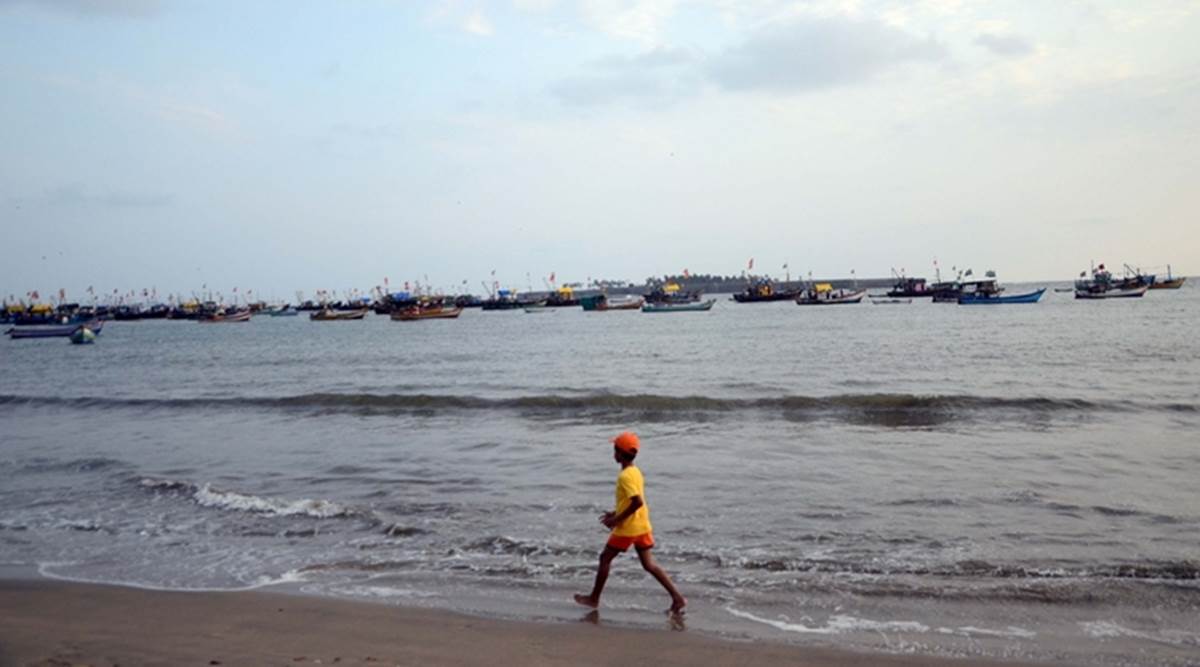 A child enjoys himself on Malvan sea beach, which is around 25 km from Bhogwe beach, selected for coastal tide pool tourism, in Sindhudurg district of Maharashtra. (File)
A child enjoys himself on Malvan sea beach, which is around 25 km from Bhogwe beach, selected for coastal tide pool tourism, in Sindhudurg district of Maharashtra. (File)The Mangrove Protection Cell of the state forest department has identified eight locations along coastal Maharashtra — three in Sindhudurg district and five in Ratnagiri district — which have the potential for coastal tide pool tourism as a livelihood option for the local communities.
The places the department identified in Sindhudurg are Tambeldeg, Kunkeshwar and Bhogwe while in Ratnagiri it has identified Katghar, Hedvi, Kharviwada, Velas and Velneshwar as probable locations.
The intertidal zone of rocky coasts is home to some amazing formations, including intertidal rock pools (also known as tide pools), which serve as microhabitats for numerous coastal creatures. The rocky coast has the highest density of macroorganisms compared to other intertidal shores, as well as the greatest diversity of animal and plant species. Numerous marine creatures use the tide pools as refuge, food sources and nursery grounds, a press note of the state mangrove protection cell said.
The locations were identified after the Mangrove and Marine Biodiversity Conservation Foundation of Maharashtra funded a study by the Salim Ali Centre for Ornithology and Natural History (SACON) under its Small Grants Programme.
The study — Documentation of fauna from tide pool ecosystems along the Ratnagiri and Sindhudurg Coast, Maharashtra — was led by Goldin Quadros, Shirish Manchi and Siddhesh Bhave. “The study found a wide range of sea creatures with 303 coastal species across these rocky tide pools. This included 30 seaweed and algae species, 80 phytoplankton species, 73 zooplankton species, 90 species of megafauna, both vertebrates (mammals, birds, reptiles and fishes) and invertebrates (crustaceans, echinoderms, annelids, amphipods among others), as well as 30 bird species, across the two coastal Konkan districts covering 288 km,” a statement from the department read.
“The ecosystems in the rocky tide pools are significant because they support a wide range of biodiversity. These pools can soon provide food security, in addition to serving as nursery for a range of species. The coastal youths can have a means of subsistence if they have a grasp of ecosystem diversity, functions, and values,” said Goldin Quadros, Principal Scientist at SACON and the author of the study.
Virendra Tiwari, Additional Principal Chief Conservator of Forest, Mangrove Cell and Executive Director, Mangrove Foundation shared that the goal was to systematically catalogue the rocky tide pools and pinpoint the region, rich biodiversity, which has shown this areas potential for extensive tourism.
He added, “While this study was thought of from the point of view to assess biodiversity, the results of this study went a step ahead to show the emergence of ecotourism opportunities. With the effects of climate change becoming increasingly apparent, all of this also has the potential to reduce the loss of ocean biodiversity, provide bio remedial treatments to clean up some areas of the ocean, and provide local fishing communities with a new source of income.”
Tiwari added that there has been relatively little tide pool research in India compared to other countries. As a part of the ecotourism plan for these areas, the Mangrove Cell and Foundation is now planning to introduce tidepooling — an outdoor activity along the shoreline during low tide to view this previously hidden biodiversity and ecosystem at such rocky intertidal zones.
“We are assessing the feasibility of introducing this activity across these eight locations by involving the local community, and further plans are being developed for this based on the study,” Tiwari said.
Researchers surveyed 45 rocky coastal areas and selected 25 locations with a continuous 500-metre-long rocky coastline for the study. More rocky intertidal areas were documented in Ratnagiri than in the Sindhudurg district. The survey was done during three seasons — pre-monsoon, monsoon and post-monsoon. All the rocky tide pools in Sindhudurg district had good species diversity, with maximum species recorded at Kunkeshwar and minimum at Girye Ghari pools, the study found. In Ratnagiri district, maximum species diversity was recorded at Velas (also famous for the Turtle festival) and minimum observed at Gaokhadi rocky tide pools.